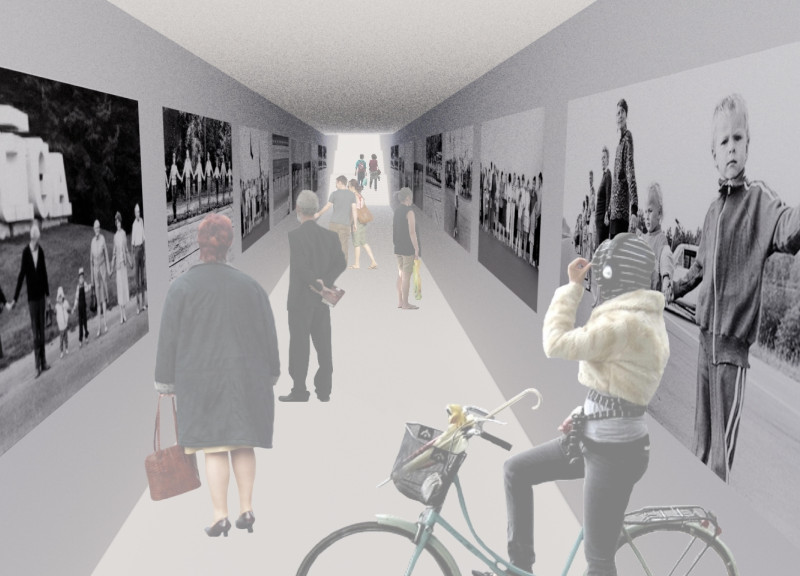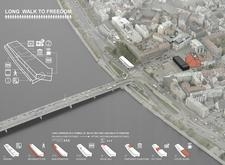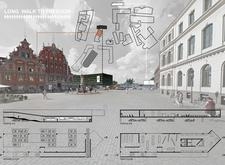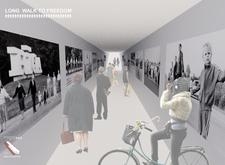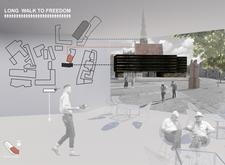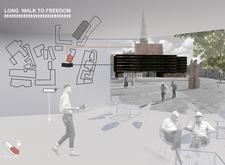5 key facts about this project
At its core, the project is intended to foster interaction among community members, encouraging engagement through various public spaces and amenities. The building’s planning emphasizes accessibility and ease of movement, incorporating wide pathways and open areas that invite people to congregate and socialize. The layout efficiently organizes different functional zones, which include multi-purpose halls, creative spaces, and quiet areas, thereby optimizing the overall user experience.
The architectural style showcases a modern aesthetic that respects the historical context of the site. It employs a combination of materials such as glass, steel, and sustainable wood, which not only contribute to the overall visual appeal but also serve practical purposes. The transparency offered by glass elements creates a sense of openness while allowing natural light to penetrate the interior spaces. This permeation of light is essential for enhancing the mood and functionality of the collective areas inside the building.
Key design elements include a dynamic facade that captures the essence of the surrounding landscape. The use of varied textures and slopes creates visual interest while reinforcing the structure's connection to nature. The incorporation of greenery on terraces and walls adds to the environmental sustainability of the project, promoting biodiversity and improving air quality in the densely built environment.
Furthermore, innovative architectural approaches were employed to optimize energy efficiency. The design implements passive solar strategies, where the orientation and positioning of windows are calculated to maximize heat gain during winter while minimizing it during summer months. This results in reduced energy consumption and enhances the building's performance over its lifespan. Rainwater harvesting systems further emphasize the commitment to sustainability, allowing for the collection and reuse of water, contributing to the building’s overall ecological footprint.
The interior design upholds the principles of flexibility and adaptability, accommodating various community activities and events. Features such as movable partitions allow for the alteration of space according to user needs, fostering a dynamic environment that can evolve over time. Thoughtful acoustic considerations ensure that discussions and gatherings occur without disturbances, enhancing the social interactions intended within the space.
Artistic elements are interwoven throughout the project, with commissioned artworks and installations that resonate with the local culture. These pieces not only contribute to the aesthetics but also provide a narrative that reflects the identity of the community. This integration of art serves as a reminder of the cultural significance behind the architecture, making the building not just a physical space but a reflection of collective memory and shared experiences.
The architectural design prioritizes user comfort, ensuring adequate ventilation and thermal regulation throughout the building. The choice of interior materials and finishes promotes a warm and inviting atmosphere, creating spaces where individuals can feel at ease while engaging in various activities. Attention to detail is evident in every facet of the design, showcasing a commitment to quality and craftsmanship.
This project stands as an example of how architecture can be an agent for social change, emphasizing the importance of community engagement and environmental sensitivity. For those seeking to gain deeper insights into this thoughtful architectural design, the exploration of architectural plans, sections, and unique design ideas can provide a comprehensive understanding of how form and function harmoniously coexist within this project. The intricate details and design aspirations showcased here are worthy of exploration, inviting readers to appreciate the architectural journey undertaken throughout its development.


